by Doug Becker, October 2020

Northern Flickers are some of the most beautiful and dramatic birds that are common across the United States and well into Canada. For many of us, we know the Flickers in the eastern U.S. as Yellow Flickers, or Yellow-Shafted Flickers. In the western states there’s the Red-Shafted Flicker. Today, however, both Flickers are simply called Northern Flickers. But, sometimes they’re called woodpeckers! What?
So, now that we have that straight, did you know that all flickers are woodpeckers? Yep. From the Pileated to the many others including all of the sapsuckers, they are all woodpeckers! Many of these flicker species don’t look alike or behave the same, but one shared characteristic is their flight pattern. Rather than flying in a straight line, they make a flap-flap-flap, then tuck. Their flight is quite powerful, and the tuck causes a dip between the flaps. The Northern Flickers, unlike woodpeckers, usually land and perch horizontally while woodpeckers fly up to a vertical perch.
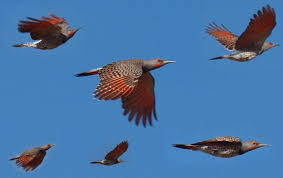


Further, woodpeckers hammer and drill on trees with their strong bill, while Northern Flickers are foragers and will hammer on the ground to find ants and other insects to feed on. Woodpeckers peck on dead or dying trees to find insects to eat and to make sound for identifying their territory and to attract a mate. As a cavity nester, the Northern Flicker drills on these trees to make his nest. These nests have a three inch opening and may be 13 to 16 inches deep. The cavity then widens near the bottom for a clutch of 5-8 eggs. Interestingly, Northern Flickers have been a nuisance around some homes by banging and drilling on the eaves or siding to make a new nest. Hmm.

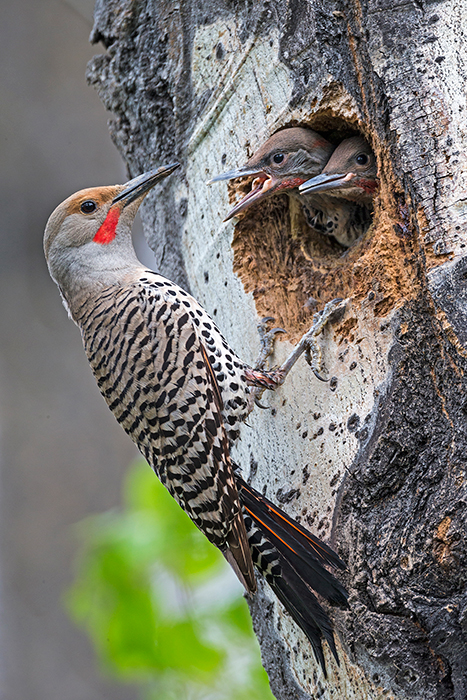
Joseph Van Os, 2013
Northern Flickers are exceptionally attractive. At 13 inches long, they are bigger than a robin, but smaller than a crow. In the west, they have a barred brown back, a buffy breast with prominent black dots, reddish coloring under the wings and tail, and sport a classy black necklace. To top this, the males wear a red mustache that can’t be missed. In the eastern states, the Northern Flicker is colored about the same, with those distinctive black spots on the breast and has bright lemon-yellow instead of red under his wings and tail. He also wears a distinctive red crescent at the nape of his neck and a handsome black mustache. Both birds are beautiful.
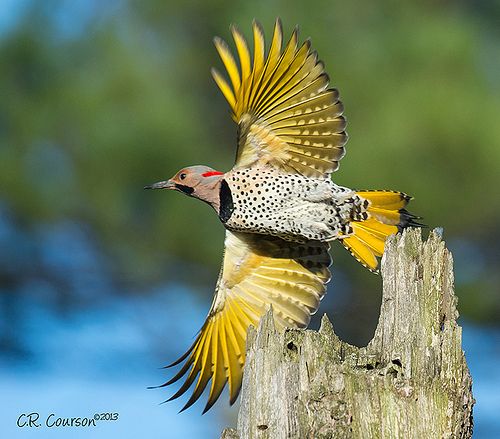
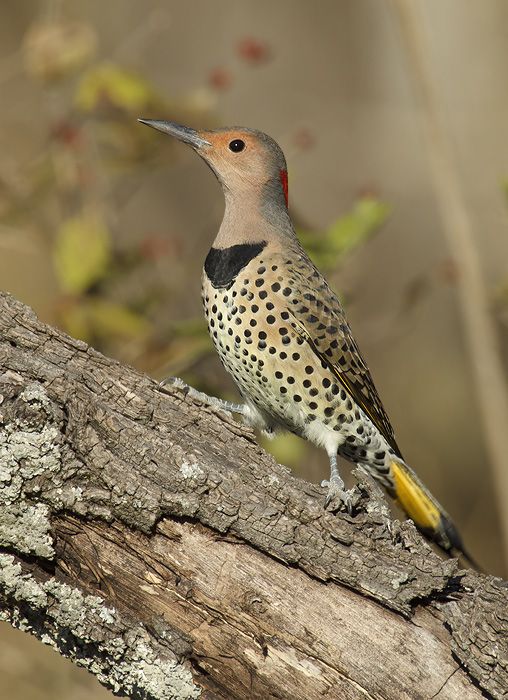
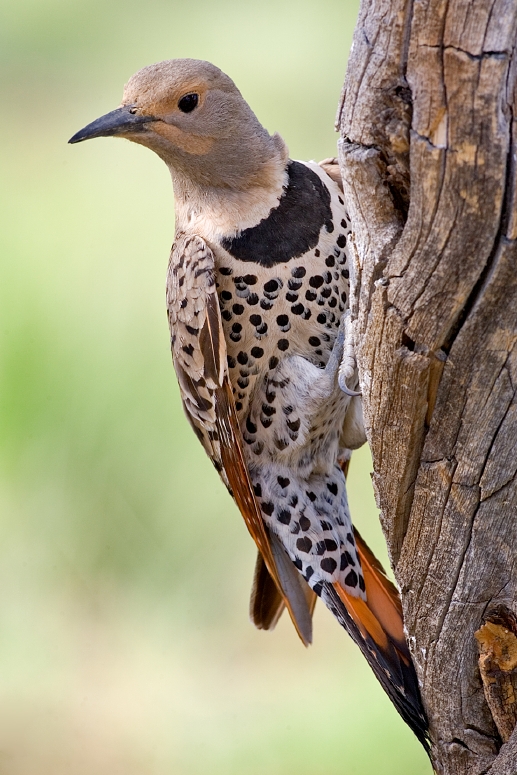

Northern Flickers are one of the few N American woodpeckers that is strongly migratory, and most move to warmer places when necessary. If you live near woods or have trees in your yard, you should be seeing them for most of the seasons. To attract them to your yard put up suet feeders with some good quality suet and a peanut feeder! Flickers also eat berries and seeds, especially in winter, including poison oak and ivy, dogwood, sumac, wild cherry and grape, bayberries, hackberries, and elderberries, and sunflower and thistle seeds. The Northern Flicker’s habitat ranges from forest edges and open fields with scattered trees, to city parks and suburbia. Their loud and piercing song that rises and falls in volume for 7-8 seconds make this large woodland bird easy to identify. This call sounds much like the Pileated Woodpecker. Just grab those binocs and look for a yellow or red flash doing a flap-flap-flap-tuck flight, and you have seen a Northern Flicker! I’ll see ya out there.

